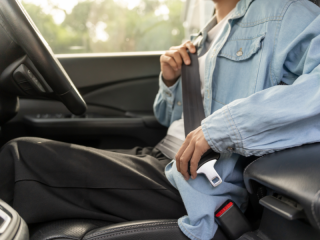
Hypermiling, or eco-driving, is the practice of driving a vehicle in the most fuel-efficient way possible. This technique has grown in popularity over the last few years and can be used by drivers to help save money through the current cost-of-living crisis.
A wide variety of fleets can benefit from hypermiling as it can be performed in petrol and diesel vehicles, plus can also be used to improve the efficiency of hybrid and electric vehicles.
Although hypermiling is a cost-effective technique, it’s important that it’s done safely to protect both the driver and their vehicle. We’ve considered everything you need to know about hypermiling and compiled some top tips about how it can be done effectively to save your business money.
What is hypermiling? More miles, less fuel
Businesses are always looking for ways to optimise their fuel usage so that they can run a profitable fleet and save money wherever possible. This has become particularly important over the last year as fuel costs reached an all-time high and many businesses are under financial strain.
As a result, many drivers are now using the hypermiling technique and altering their driving behaviour to become more efficient. This is achieved by maintaining the momentum of your vehicle by choosing direct routes that require the least amount of acceleration and braking possible.
It’s been reported that this technique could save drivers a substantial amount each month which will appeal to fleets that are looking to cut fuel costs. However, some of these techniques can potentially be dangerous so it’s essential that drivers put safety first, making sure to focus on the road ahead and consider other road users.
Hypermiling can also be used to improve the mileage of an electric vehicle, which is particularly useful given that the cost of charging an EV has increased substantially over 2022 due to the energy price cap increase. Hypermiling could be a viable solution for businesses as it can extend the range of EVs, reducing the frequency of recharging.
Hypermiling techniques are the same for electric vehicles as their ICE counterparts as they’re based on driver behaviour and the condition of the vehicle rather than the fuel used.
Adapting driver behaviour can help to improve the fuel efficiency of your fleet, however choosing when to drive, and deciding whether it’s even necessary is just as important. Drivers can also maximise their hypermiling techniques by making changes to their vehicles. We suggest you:
Ensure your vehicle is properly maintained and serviced regularly as this will keep your vehicle operating efficiently.
Track your MPG. By keeping detailed records of your mileage and fuel usage, you can determine how successful your hypermiling techniques have been.
Wherever possible remove excess weight, such as toolboxes and heavy goods and take off any unused roof racks as this can increase drag.
Ensure your tyres are inflated to the correct pressure to ensure that rolling resistance is at its most efficient. This is important as low tyre pressure causes more drag and less MPG which will lower the fuel economy of your vehicle.
Limit the use of air-conditioning and heating as they can increase your fuel consumption by around 10% if used frequently.
Plan your route in advance, choosing roads that are as short and flat as possible whilst avoiding potential traffic congestion. Drivers can use a new tool by Google which highlights the most fuel-efficient route for you to take.
Wear lightly soled shoes to give you a better feel of the pedals, allowing you to brake and accelerate smoothly.
Hypermiling top tips
With fuel and electricity prices on the rise, integrating a few hypermiling measures into your driving can save your business a substantial amount of money in the long run. Adjusting your driving style and habits is a simple way to ensure that you’re maximising your fuel economy. Some of our top hypermiling tips are:
Slow down. Driving faster creates more drag and resistance which will use more fuel. If drivers reduce their speed by 20mph, when possible, they’ll increase their MPG by up to 45%.
Drive without brakes (DWB). Driving with minimal use of the brakes is a popular technique as it can help you save fuel by maximising your vehicle’s stored momentum and energy. This can be done by thinking ahead and taking your foot off the accelerator in advance, so you don’t have to slam on your brakes. We do not recommend that you avoid using your brakes completely as this could cause an accident on the road. It’s also possible to allow the regenerative braking in an electric vehicle to handle most of the braking for you.
Drive defensively. Drivers should also anticipate events before they occur, for example, a traffic light turning red. This allows you to drive safely on the road and increases your fuel economy as you can avoid harsh braking and accelerating by being prepared.
Get fuel for the best price. Fuel prices are currently extremely volatile, so it’s more important than ever before to ensure that you’re getting the best price for your fuel. Planning your route in advance will help you to identify accessible fuel stations and drivers can use a cost-effective fuel card to pay for their fuel.
Some hypermiling methods, including coasting and idling, can pose a risk to your vehicle and other road users, so these should be avoided to help keep you safe on the road. Businesses need to ensure that their drivers are properly trained and capable of driving safely before they attempt to use hypermiling techniques as it could cause them to be distracted from the road.
How our fuel cards can help with your fuel consumption
By using a fuel card in conjunction with hypermiling techniques, businesses can track their fuel expenditure and keep costs down.
Right Fuel Card offers a range of fuel cards that are suited to all businesses, regardless of how many vehicles are in their fleet. We have competitive fuel prices that aim to help you save money on every litre of fuel bought and we do not charge any interest fees on purchases made with our fuel cards.
In addition, our fuel cards can reduce administration costs as businesses can easily monitor all transactions through our online account management system. Drivers will no longer need to keep hold of their receipts, as you’ll receive a single weekly invoice, making it much easier for you to claim back any VAT that’s owed to you.
To find out more about how our fuel cards can benefit your business, contact our team at 0113 202 5110 today. Alternatively, you can use our quick comparison tool to discover the fuel card that best suits the needs of your fleet.




